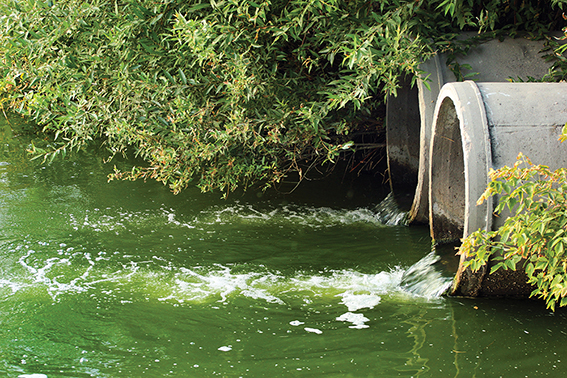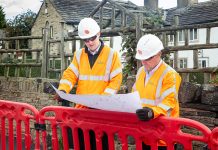Spills from wastewater system storm overflows have attracted much media attention, and the Government has just concluded its consultation on developing a Storm Overflow Discharge Reduction Plan (SORP). Andy Godley, from the Water Research Centre (WRc), looks at the latest developments in wastewater flows and levels.
It is difficult to argue with the sentiments behind the consultation and there is no doubt that some overflows have been spilling for longer and/or more frequently than their designers intended. There are various reasons, including increased paved surfaces in urban areas causing more surface water run-off, higher local populations unmatched by increasing sewer capacity and lack of maintenance, leading to blockages and higher infiltration.
However, some of the ideas presented in the consultation are over-simplistic – for example an arbitrary target of 10 spills per year – and all carry a cost as identified in the accompanying Storm Evidence Overflows Project report 1. The consultation acknowledges the efforts being put into increased monitoring of CSOs; by the end of 2023, all should be fitted with an event duration monitor (EDM).
Reliable and accurate monitoring relies on choosing the most appropriate sensors for the application, ensuring good installation and commissioning practice and maintenance. It is important to note that this does not just apply to the sensor, but the whole data chain from the sensor to data storage and processing. Anecdotal evidence suggests that many existing EDMs are not installed to best practice, and data from 2021 2 shows that 13% of installed EDMs had less than 90% operability.
The Environment Agency is about to publish its long-awaited guidance on the use of EDMs for monitoring those spills closest to treatment works to demonstrate compliance with works’ permits. This is being incorporated into the MCERTS self-monitoring and inspection schemes. Together with supporting MCERTS product standard to demonstrate the fitness for purpose of EDM instruments, this will improve the accuracy with which these spills are monitored. However, if we are to get serious about spills wherever they occur in the network, these same standards should be required for all EDMs to ensure reliable and consistent monitoring.
Radar based level sensors are now challenging ultrasonic level sensors on price and beginning to take market share for EDM and open channel flow applications. WRc’s experience in testing radar level sensors for MCERTS product certification shows that performance is very good, with currently certified sensors achieving the best performance level of MCERTS Class 1 with a combined performance characteristic less than 0.2%.
Whilst it is clearly time for a close look at overflows, this needs to be in the overall context of the wastewater system from collection to treatment. Application of smart technology in the wastewater system has lagged behind its use in the clean water network but is beginning to catch up. Companies such as United Utilities, Severn Trent and Southern Water are installing networks of sewer level monitoring equipment and working with suppliers such as Detectronic to apply AI and data analytics to turn that data into actionable information.
This enables more rapid detection of developing blockages and increasing infiltration and helps reduce spills. WRc has also explored the potential of linking in other data, such as rainfall, to help manage capacity at works to deal with incoming surges – the so-called “first flush” during a storm that can contain high levels of solids picked up by the sudden surge in flow.
Wastewater level is reasonably straightforward; however, flow measurement presents different measurement challenges in that much is in channels and sewers with free surface flows and the fluid contains fats and debris that will foul many sensors.
Non-contact sensors are an attractive option to deal with fouling. Various non-contact sensors are now available that use radar or laser techniques to obtain a water velocity reading. Used together with a level sensor, such sensors can provide volumetric flow. However, these sensors typically measure velocity at, or near, the surface and this needs to be converted to a mean velocity taking account of the through depth and cross-channel velocity profiles. WRc has been using advanced computational modelling (CFD) techniques to explore in more detail how free surface flows behave, and from that how such devices should be used to meet accuracy required by the regulator.
This modelling is showing complex flow patterns where secondary flows caused by local turbulence have a significant impact on the relationship between surface and mean velocities, even in long straight channels. When disturbances are present, this further affects the predictability of that relationship. This is borne out by the testing we have carried out on such devices where the response to a given flow condition is not always as expected. Testing and modelling point towards the need for onsite calibration to allow for site-specific flow conditions. This will be further explored as our project progresses.
In conclusion, flows and levels in the wastewater network are at last receiving the attention needed to improve wastewater management. This is spurring innovation in sensors and data analytics to turn that data into useful information. However, as with all measurements, the benefits will only be fully realised by remembering the basics of right equipment, good installation and commissioning, and maintenance.
References
1. Storm Evidence Overflow project Report. Gill E et al. November 2021 Water UK
2. Event Duration Monitoring – Storm Overflows – Annual Returns – 2021






